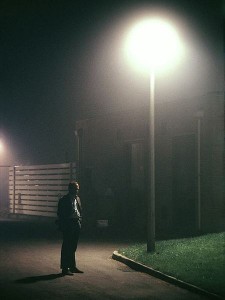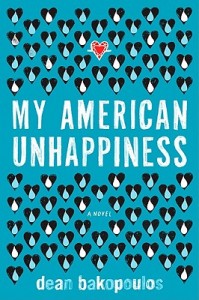We’ve discussed the links between depression and creativity on this blog before—from a report that some schools on Nantucket were banning “depressing” literature in response to high rates of teen suicides to Anne’s reflections on “When Writers Stop Drinking (or Start Taking Meds, or Start Reading Peter Kramer).” Jonah Lehrer’s recent essay in The New York Times Magazine investigates this question from a different angle: whether depression has an evolutionary purpose.
For some unknown reason, the modern human mind is tilted toward sadness and, as we’ve now come to think, needs drugs to rescue itself.
The alternative, of course, is that depression has a secret purpose and our medical interventions are making a bad situation even worse. Like a fever that helps the immune system fight off infection — increased body temperature sends white blood cells into overdrive — depression might be an unpleasant yet adaptive response to affliction. Maybe Darwin was right. We suffer — we suffer terribly — but we don’t suffer in vain.
Here’s the section that may be of most interest to writers:
In a survey led by the neuroscientist Nancy Andreasen, 30 writers from the Iowa Writers’ Workshop were interviewed about their mental history. Eighty percent of the writers met the formal diagnostic criteria for some form of depression. A similar theme emerged from biographical studies of British writers and artists by Kay Redfield Jamison, a professor of psychiatry at Johns Hopkins, who found that successful individuals were eight times as likely as people in the general population to suffer from major depressive illness.
Why is mental illness so closely associated with creativity? Andreasen argues that depression is intertwined with a “cognitive style” that makes people more likely to produce successful works of art. In the creative process, Andreasen says, “one of the most important qualities is persistence.” Based on the Iowa sample, Andreasen found that “successful writers are like prizefighters who keep on getting hit but won’t go down. They’ll stick with it until it’s right.” While Andreasen acknowledges the burden of mental illness — she quotes Robert Lowell on depression not being a “gift of the Muse” and describes his reliance on lithium to escape the pain — she argues that many forms of creativity benefit from the relentless focus it makes possible. “Unfortunately, this type of thinking is often inseparable from the suffering,” she says. “If you’re at the cutting edge, then you’re going to bleed.”
And then there’s the virtue of self-loathing, which is one of the symptoms of depression. When people are stuck in the ruminative spiral, their achievements become invisible; the mind is only interested in what has gone wrong. While this condition is typically linked to withdrawal and silence — people become unwilling to communicate — there’s some suggestive evidence that states of unhappiness can actually improve our expressive abilities. Forgas said he has found that sadness correlates with clearer and more compelling sentences, and that negative moods “promote a more concrete, accommodative and ultimately more successful communication style.” Because we’re more critical of what we’re writing, we produce more refined prose, the sentences polished by our angst. As Roland Barthes observed, “A creative writer is one for whom writing is a problem.”
Depression is serious, of course, and can be crippling. But these findings suggest that a moderate level of melancholy could actually help with writing. What do you think, FWR readers? Does this give sadness a silver lining?



